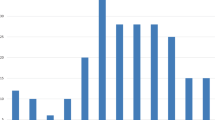Summary
Hematogenous dissemination has long been considered an important pathogenetic event in Lyme borreliosis but has been hard to document and characterize due to insensitive blood culture methods. In a series of recent investigations involving adult patients from the United States with erythema migrans, it was concluded that plasma was a better source of culture material than serum or whole blood, and yield correlated directly with the volume of material cultured. The rate of recovery of Borrelia burgdorferi from 9 mL of plasma exceeded 40%. Both the genotype of the strain of B. burgdorferi introduced by the tick and host factors, such as having a first episode of Lyme borreliosis and being more than 55 years of age, appear to affect the risk of hematogenous dissemination. Although the majority of spirochetemic patients are symptomatic, spirochetemia can be a subclinical event. In summary, hematogenous dissemination is a common and important feature of early Lyme borreliosis in the United States. The high rate, early onset and prolonged duration of risk of spirochetemia probably explain why untreated patients with erythema migrans may develop objective clinical manifestations at a distant anatomic site.
Similar content being viewed by others
References
Steere AC, Schoen RT, Taylor E (1987) The clinical evolution of Lyme arthritis. Ann Intern Med 102: 725–731
Shrestha M, Grodzicki RL, Steere AC (1985) Diagnosing early Lyme disease. Am J Med 78: 235–240
Benach JL, Bosler EM, Hanrahan JP, et al (1983) Spirochetes isolated from the blood of two patients with Lyme disease. N Engl J Med 308: 740–742
Steere AC, Grodzicki RL, Craft JE, Shrestha M, Kornblatt AN, Malawista SE (1984) Recovery of Lyme disease spirochetes from patients. Yale J Biol Med 57: 557–560
Berger BW, Johnson RC, Kodner C, Coleman L (1994) Cultivation of Borrelia burgdorferi from the blood of two patients with erythema migrans lesions lacking extracutaneous signs and symptoms of Lyme disease. J Am Acad Dermatol 30: 48–51
Goodman JL, Bradley LF, Ross AE, et al (1995) Blood stream invasion in early Lyme disease: results from a prospective, controlled, blinded study using polymerase chain reaction. Am J Med 99: 6–12
Maraspin V, Ruzic-Sabljic E, Cimperman J, et al (2001) Isolation of Borrelia burgdorferi sensu lato from blood of patients with erythema migrans. Infection 29: 65–70
Arnez M, Ruzic-Sabljic E, Ahcan J, Radsel-Medvescek A, Pleterski-Rigler D, Strle F (2001) Isolation of Borrelia burgdorferi sensu lato from blood of children with solitary erythema migrans. Pediatr Infect Dis J 20: 251–255
Oksi J, Marttila H, Soini H, Aho H, Uksila J, Viljanen MK (2001) Early dissemination of Borrelia burgdorferi without generalized symptoms in patients with erythema migrans. APMIS 109: 581–588
Straubinger RK (2000) PCR-Based quantification of Borrelia burgdorferi organisms in canine tissues over a 500-day postinfection period. J Clin Microbiol 38: 2191–2199
Hansen K, Lebech AM (1992) The clinical and epidemiological profile of Lyme neuroborreliosis in Denmark 1985–1990. A prospective study of 187 patients with Borrelia burgdorferi specific intrathecal antibody production. Brain 115 (Pt 2): 399–423
Dorn GL, Burson GG, Haynes JR (1976) Blood culture technique based on centrifugation: clinical evaluation. J Clin Microbiol 3: 258–263
Kellogg JA, Manzella JP, McConville JH (1984) Clinical laboratory comparison of the 10-mL isolator blood culture system with BACTEC radiometric blood culture media. J Clin Microbiol 20: 618–623
Wormser GP, Nowakowski J, Nadelman RB, Bittker S, Cooper D, Pavia C (1998) Improving the yield of blood cultures for patients with early Lyme disease. J Clin Microbiol 36: 296–298
Wormser GP, Bittker S, Cooper D, Nowakowski J, Nadelman RB, Pavia C (2000) Comparison of yields of blood cultures using serum or plasma from patients with early Lyme disease. J Clin Microbiol 38: 1648–1650
Wormser GP, Bittker S, Cooper D, Nowakowski J, Nadelman RB, Pavia C (2001) Yield of large-volume blood cultures in patients with early Lyme disease. J Infect Dis 184: 1070–1072
Coulter P, Lema C, Flayhart D, et al (2005) Two-year evaluation of Borrelia burgdorferi culture and supplemental tests for definitive diagnosis of Lyme disease. J Clin Microbiol 43: 5080–5084
Perl B, Gottehrer NP, Raveh D, Schlesinger Y, Rudensky B, Yinnon AM (1999) Cost-effectiveness of blood cultures for adult patients with cellulitis. Clin Infect Dis 29: 1483–1488
Wormser GP, Liveris D, Nowakowski J, et al (1999) Association of specific subtypes of Borrelia burgdorferi with hematogenous dissemination in early Lyme disease. J Infect Dis 180: 720–725
Wang G, Ojaimi C, Iyer R, et al (2001) Impact of genotypic variation of Borrelia burgdorferi sensu stricto on kinetics of dissemination and severity of disease in C3H/HeJ mice. Infect Immun 69: 4303–4312
Wang G, Ojaimi C, Wu H, et al (2002) Disease severity in a murine model of Lyme borreliosis is associated with the genotype of the infecting Borrelia burgdorferi sensu stricto strain. J Infect Dis 186: 782–791
Seinost G, Dykhuizen DE, Dattwyler RJ, et al (1999) Four clones of Borrelia burgdorferi sensu stricto cause invasive infection in humans. Infect Immun 67: 3518–3524
Liveris D, Wang G, Girao G, et al (2002) Quantitative detection of Borrelia burgdorferi in 2-millimeter skin samples of erythema migrans lesions: correlation of results with clinical and laboratory findings. J Clin Microbiol 40: 1249–1253
Lagal V, Postec D, Ruzic-Sabljic E, Baranton G (2003) Genetic diversity among Borrelia strains determined by single-strand conformation polymorphism analysis of the OspC gene and its association with invasiveness. J Clin Microbiol 41: 5059–5065
Liveris D, Gazumyan A, Schwartz I (1996) Molecular typing of Borrelia burgdorferi sensu lato by PCR-restriction fragment length polymorphism analysis. J Clin Microbiol 34: 1306–1309
Wormser GP, McKenna D, Carlin J, et al (2005) Brief communication: hematogenous dissemination in early Lyme disease. Ann Intern Med 142: 751–755
Shih C-M, Pollack RJ, Telford SR III, Spielman A (1992) Delayed dissemination of Lyme disease spirochetes from the site of deposition in the skin of mice. J Infect Dis 166: 827–831
Author information
Authors and Affiliations
Corresponding author
Rights and permissions
About this article
Cite this article
Wormser, G. Hematogenous dissemination in early Lyme disease. Wien Klin Wochenschr 118, 634–637 (2006). https://doi.org/10.1007/s00508-006-0688-9
Issue Date:
DOI: https://doi.org/10.1007/s00508-006-0688-9




